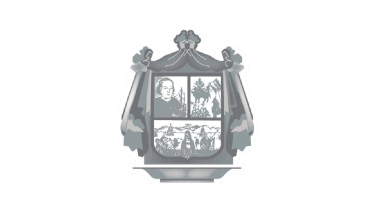
by Daniel Rentería, 11 July 2025, using coat of arms at colon.gob.mx
image: [1] from Facebook

Last modified: 2025-07-18 by daniel rentería
Keywords: colon | queretaro | bandera municipal y escudo municipal (queretaro) | escudo del municipio (queretaro) | bandera del municipio (queretaro) | héraldica municipal de queretaro |
Links: FOTW homepage |
search |
disclaimer and copyright |
write us |
mirrors

by Daniel Rentería, 11 July 2025, using coat of arms at colon.gob.mx
image: [1] from Facebook
See also:
The flag of Colón is white with the coat of arms centered upon it in gray.
Daniel Rentería, 11 July 2025
.gif)
from colon.gob.mx
The coat of arms is most commonly depicted in black and white or gray. It was adopted through a contest held by the Municipal Council under Municipal President José Saúl Cabrera Vázquez (1985-1988). On 10 October 1986 at 20:00 hours, twelve designs were exhibited; the symbology was explained, and an artist synthesized the twelve submissions into one coat of arms. The teacher Rosario S. de Lozada created an oil painting (the most common depiction in color, found here). Placed on a pedestal and covered by a pink mantle (which is crowned) of Querétaro stone signifying its geographic location, a frame of three sections is depicted.
The upper-left section depicts the bust of Christopher Columbus (Cristobal Colón), namesake of the municipality with his caravel that returned to Spain to give the word of the existence of the land. The upper-right section depicts the bovine cattle-raising (through a cow), the industry which brought the Spaniards here; in the background, a coniferous tree and a Yucca filifera for the natural resources of the municipality (wood and fibers). In front of the cow are three different types of cacti representing the semi-desert region of the municipality (in some versions, to the left in place of a cactus corn plants are depicted for agriculture instead). A sarape is also depicted representative of the artisanry as part of its local economy. The lower section depicts a panorama of the city of Colón, with the Sierra Gorda mountains in the background, with the sun indicating a new day, over it reading the year 1531 for its foundation. At the very right and left, a tree is seen on each side. In the center, a cactus with flowers and fruits remembers the National Coat of Arms. Over it is a young woman indicating the mixture of the Spanish and Indian races, mestizaje. To the left, Chichimeca Indian weapons are seen: bow, arrows, quiver, and a coyote skin as part of the traditional wear of the old town. Also found here is the San Francisco de Asís church. To the right, the Otomí weapons: lance and club; also found here are the Spanish weapons: shield bearing an Otomí design for their alliance, helmet, and sword. To the left of the shield is a tree. Also found here is the Nuestra Señora de los Dolores del Soriano church. These represent the three groups of the area: Chichimeca, Otomí, and Spanish; the churches represent its old history.
Daniel Rentería, 11 July 2025
Anything below this line was not added by the editor of this page.